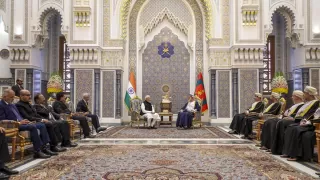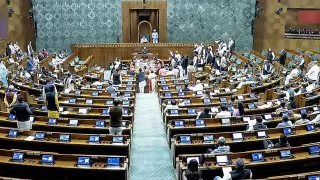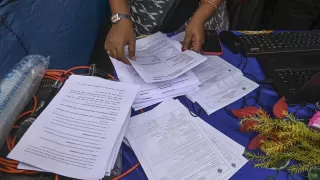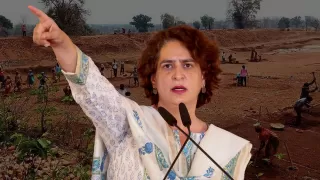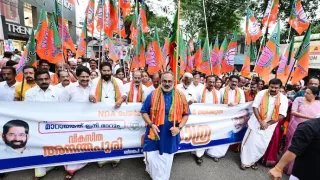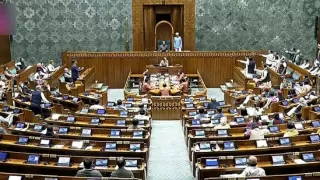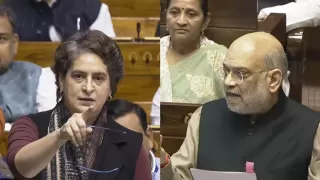In a momentous display of democratic participation, the first phase of the 2025 assembly elections in Bihar came to a close with an unprecedented surge in voter turnout. Across 121 constituencies, citizens from every walk of life joined long queues, some casting their ballots for the very first time, their fingers marked indelibly with ink — a vivid symbol of the civic duty fulfilled. Emotions ran high, but above all, there was a sense of occasion: this wasn’t just another election, but a turning-point in the state’s political journey.
The palpable energy at polling booths — from early-morning arrivals in rural hamlets to young voters in urban centres — underscored one thing: the people of Bihar are deeply engaged in shaping their future. Under the bright November sky, as families walked into schools and community centres to vote, many felt as though they were witnessing history in motion. This phase may well mark the start of change in a state long defined by entrenched power paradigms.
But beyond the optimism lies the hard question: what does this surge in participation really mean for politics in Bihar? For the ruling alliance, it brings hope of reinforcing their mandate; for the challengers, it is the fuel of possibility. Analysts are already poring over district-wise numbers, gender patterns and the nuances of turnout to detect the contours of the emerging political map. Let’s dive into what these results tell us, what the major players are saying — and what might happen next.
Record Turnout: What The Numbers Reveal
The first phase of the election covered 121 assembly seats in 18 districts of Bihar — involving roughly 3.75 crore eligible voters. :contentReference[oaicite:0]{index=0} By the close of polls, the state recorded a turnout of 64.66 per cent — the highest ever for an assembly phase in Bihar’s history. :contentReference[oaicite:1]{index=1} This figure surpassed past benchmarks and marked an electoral moment of heightened engagement. Early in the day, turnout by 5 pm had already crossed 60 per cent, a clear indication of strong momentum. :contentReference[oaicite:2]{index=2}
Breaking it down further, district-level data reveal interesting patterns. Some constituencies posted turnouts exceeding 70 per cent, while others remained closer to the state average. :contentReference[oaicite:3]{index=3} The electoral roll had undergone a major revision before the elections — nearly 47 lakh names were removed during the Special Intensive Revision (SIR) exercise. :contentReference[oaicite:4]{index=4} That this did not dampen voter turnout is notable: despite the clean-up of rolls, voters stepped up in large numbers.
What these numbers suggest is two-fold: first, a renewed enthusiasm in the electorate; second, perhaps a signal that many voters believe change is possible. Still, as analysts caution, turnout alone does not guarantee outcomes — the spatial pattern of votes, the gender gap, and local issues will all matter deeply as results approach.
Political Stakes: Alliances, Players and Strategies
At the heart of the contest is the rivalry between the ruling National Democratic Alliance (NDA) and the opposition bloc known as the Mahagathbandhan. The NDA, anchored by Bharatiya Janata Party (BJP) and Janata Dal (United) (JD(U)), is seeking to renew its mandate, while the Mahagathbandhan — led by Rashtriya Janata Dal (RJD) and Indian National Congress (Congress) — is campaigning on themes of anti-incumbency, development and social justice. :contentReference[oaicite:11]{index=11}
Responses to the turnout have been swift. The Mahagathbandhan sees the high participation as validation of its “change” narrative, while the NDA interprets the same as affirmation of its governance focus and organisational strength. In this campaign, newer entities such as Jan Suraaj Party have also tried to carve space, emphasising youth, migration and job creation. :contentReference[oaicite:13]{index=13} For the NDA, retaining power means not just winning seats, but demonstrating resilience in a state historically prone to swings. For the opposition, the moment offers hope of a breakthrough.
The political execution on the ground will matter enormously. After the ballot boxes close and counting begins, factors such as gender-wise turnout, migrant labour participation, and regional dynamics will shape winners and losers. Simply put: high turnout is only one piece of the electoral puzzle — the rest will unfold in seat-by-seat outcomes.
Voter Profile & Emerging Trends
Closer inspection of the voting patterns reveals new contours in Bihar’s electoral character. One key signal is the role of women voters: in several booths, women turnout outpaced men, a trend that historically benefits the ruling alliance. :contentReference[oaicite:14]{index=14} Meanwhile, migrant labourers — many of whom returned home during festivals and stayed on to vote — also seem to have influenced the turnout, bringing fresh energy to constituencies even in traditional strongholds. :contentReference[oaicite:15]{index=15}
Another trend is the narrowing of the gender gap and increasing participation in younger age cohorts. First-time voters queued in large numbers, often casting their ballots alongside elders, pointing to a rising democratic confidence among youth segments. Analysts call it a “quiet revolution”, whereby new voters are increasingly active rather than passive participants. :contentReference[oaicite:16]{index=16} Also notable is the geographic spread: while urban centres recorded respectable numbers, the strongest surges came from semi-rural and rural areas, where local issues such as jobs, connectivity and governance resonated strongly.
This evolving voter profile has implications: parties can no longer rely solely on caste-based mobilisation or legacy appeals. They must deliver narratives that connect with young aspirations, women’s concerns and returning migrants. In turn, the outcome may hinge less on old alignments and more on performance promises and credibility.
Implications for National And State Politics
The outcome of this election — and the significance of the turnout — extends far beyond Bihar’s borders. The state has long been seen as a political bellwether, and this contest is considered a key indicator ahead of future national elections. :contentReference[oaicite:17]{index=17} For the BJP-led NDA, a strong performance would reinforce its dominance and validate its developmental messaging; for the opposition, it represents an opportunity to disrupt the status quo.
At the state level, the high turnout raises questions for the incumbent leadership of Chief Minister Nitish Kumar and his allies: does this renewal of democratic engagement favour continuity or change? The answer will shape Bihar’s political trajectory for years. Further, the implications of the SIR (Special Intensive Revision) of electoral rolls, which preceded the poll, add another layer of complexity: while the exercise faced criticism from opposition camps, the high turnout suggests it did not suppress participation. :contentReference[oaicite:19]{index=19}
Finally, the strategic lessons for future elections are already being drawn: high turnout in phase one puts pressure on parties to mobilise effectively in phase two (scheduled for 11 November), and sets the tone for campaigning strategy, alliance formations and vote-share calculations. The results day — 14 November — will not only decide the government in Bihar but may also send ripples across India’s political landscape.
What To Watch Next
- Phase Two Turnout: Will the second phase see similar participation across the remaining 122 seats? A repeat or rise would signal sustained enthusiasm.
- Seat-wise Outcomes: Which constituencies buck the trend, and where marginal swings tip the balance? Close races will offer key insights into voter behaviour.
- Gender & Age Patterns: How will turnout disparities by gender and age translate into vote shares? Parties will be watching these metrics closely.
- Impact of Migrants: Returning migrant labourers and first-time voters may influence seat outcomes in unexpected ways — their actual choices will matter.
- Alliance Strengths: Will the NDA hold ground across its fiefdoms, or will the Mahagathbandhan and newer parties break through? This will shape government formation.
The curtain has been raised, the stage set. With one act completed spectacularly — record turnout, high stakes and palpable momentum — the next days will decide whether Bihar’s voters usher in continuity or change. Whatever the result, the message is clear: the people of Bihar showed up in force, and their voice will echo in the corridors of power for some time to come.
Also Read: Supreme Court Plea Seeks ‘National Emergency’ on Pollution




